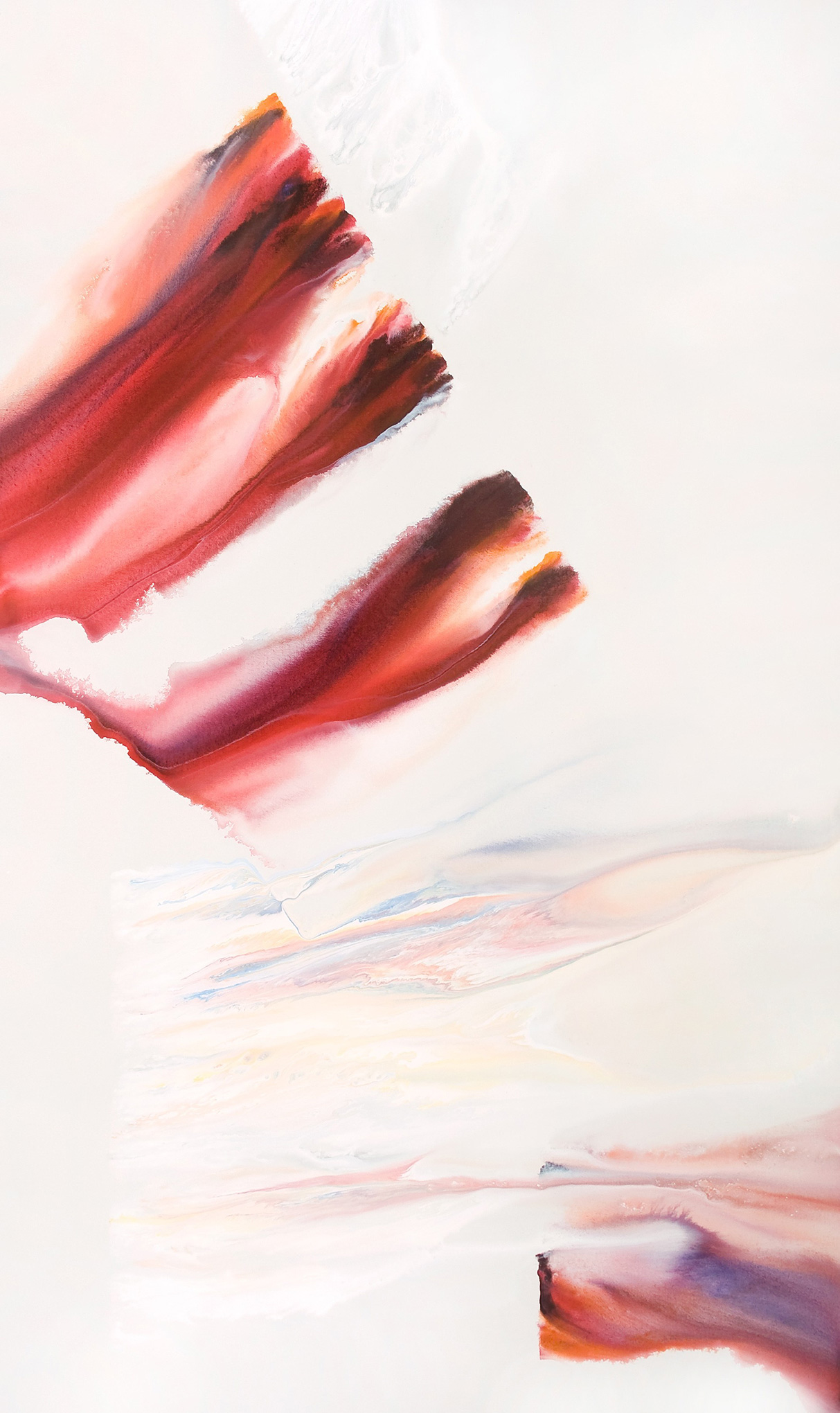MVHD
by Pedro França
(Translated from Portuguese by Ben Khon)
As printed on the catalogue of the solo exhibition at the Galeria Nara Roesler, São Paulo SP, 2010.
“The paintings are made on the floor… The process begins with the preparation of a careful mixture of different colours… unique and very fluid and which initially presents a single complex colour... Next I attack the canvas with a brush that hardly touches it... I start to accompany the paint drying, interfering at certain times... just spraying water from a distance, in order to create gradients of concentration that will be responsible for displacing the pigments… the lighter pigments are more easily swept by the force of diffusion and are separated from the heavier pigments.”
With a taste for parody, we could say that Manoel manipulates paintings and relinquishes dwelling in them. After all, are these gestures that barely touch the canvas surface not tangential actions, which do no more than simply indicate the path of the paint? None of that tragic diving of that artist who painted from “within” and, according to Kaprow, “almost never left the canvas.” Manoel seems to take a stance one step back, like a catalyst, a detonator of events on the painting’s surface. A remote control: from that crow’s nest (there were no stairs in Pollock’s studio) he astutely manipulates an abstract process, an equivocal term acclaimed by art as non-figuration and by science as anticipation. He strictly establishes the limits of chance. With years of experience in the behaviour of the materials, he has increased the odds of getting it right (PF: getting it right? what’s the criteria?. With the introduction of new problems, and the abandonment of known answers, the risk of failure is increased (MV: I want the presence of the movement, and the eye to wander without stopping in the space of the painting… I don’t know.)
High definition: The gesture defines its own denial: (work with a low degree of authorship). The paint spreads itself, the colours themselves jump out and the space produces itself by diffusion. No paintbrushes, no pixels in sight: only fluid space, with no atomic parts, the image of an unlimited field of immersion.
In order to prevent us from fixing our eye on the surface, in previous paintings Manoel had explored spatial oscillation of the background. For contrast, he pulled the coloured areas to the front or pushed them to the back, maximizing the smooth transition from colour to white, incorporating it into the chromatic continuum of the areas where paint is deposited. At the same time, he kept the edges from overstating the physical and two-dimensional presence of the surface upon touching their limits. In these optical games the materiality of the craft, the opacity of the plane and the objectuality of the painting tend to be muffled, or reduced, bringing to the fore the conception of a luminous, continuous and profound space. Now the work once again asserts the existence of these three elements, but in an attempt to annul them by their very presence (the vaccination logic: be inoculated with the poison to fight it): the background can now be folded over the painting (the logic of phagocytosis, or the transparent bit of raised skin on the fingertip): the new white layers are not actually composed of paint, but the same substance used to prepare the canvas. The edges of the painting are provoked by the echo at the solid boundaries which threaten to circumvent shapes (but the fluid colour always ends up escaping and fusing with the surrounding space: the runny fried egg logic). And the brushstroke returns in the finishing, camouflaged in the paint dispersed over the canvas in such a way as to ensure the general fluidity of the space (the logic of illusion, of artifice, of the image beyond the process).
No hurried family tree should be sketched for Manoel’s project (MV, do you know ML?). It’s impossible to address the dizzying visual effect of these pieces according to former modernist criteria. Another repertoire, which is familiar yet strange to the practice of painting, is called for: to regard them as image painting, 3D-cinema-painting; belonging to the age of the visual synthesis of telescopes, of dye-induced reagent colouring, of slow motion replays in football matches, of animated graphics on the weather forecast, of the spectacularization of synthesis images, of telepresence, of computer screen protectors, of chromatic interpretation of the war and of the impeccable modelling of new digital actresses. Abstractions of another kind, in short.

